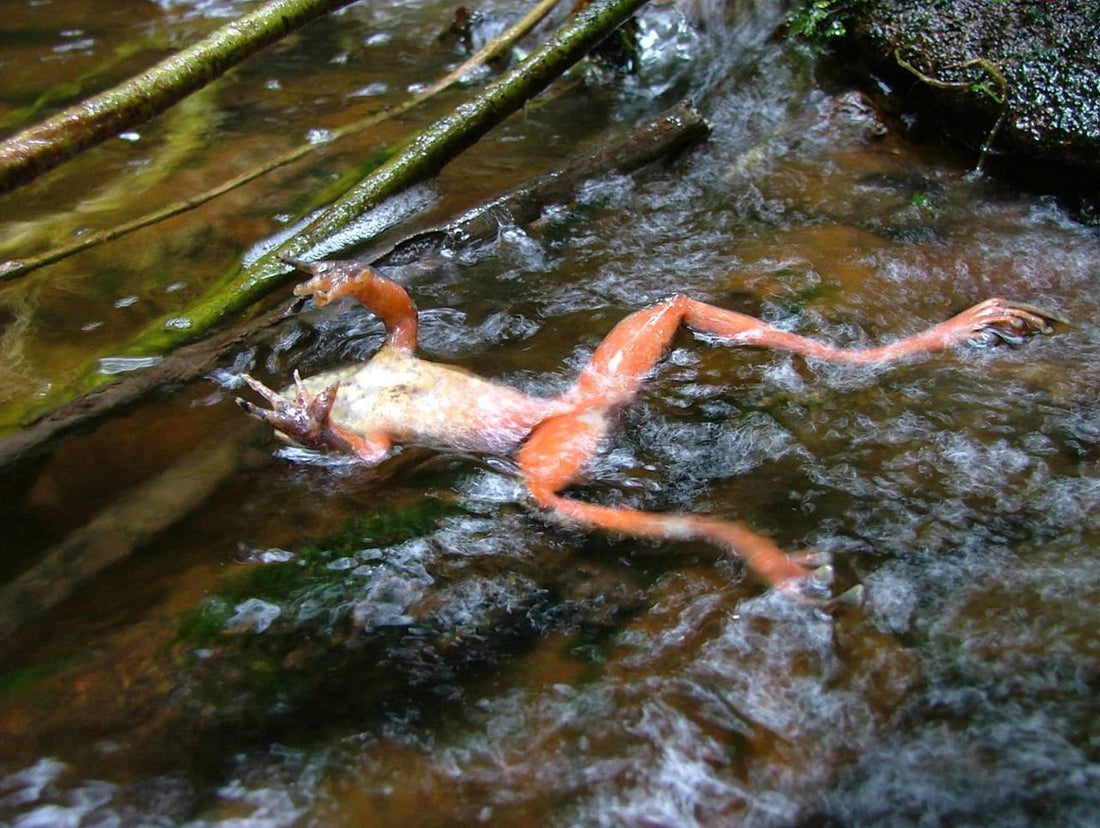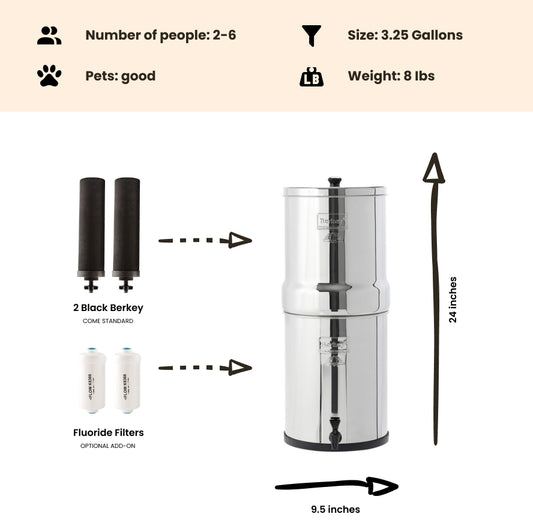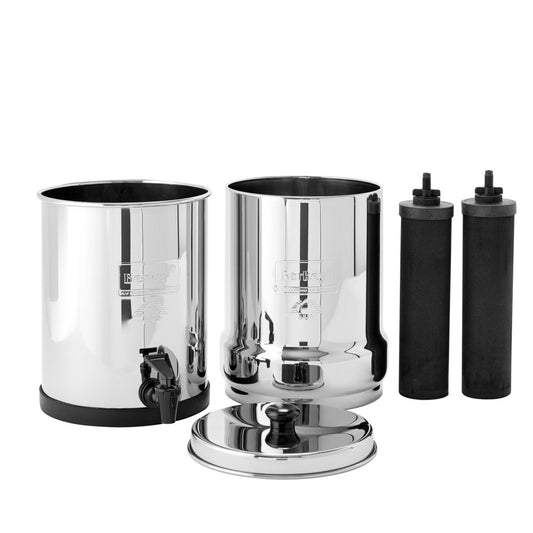
Atrazine in Drinking Water - The Source and Effects on Human Health
By Dan DeBaunShare
Atrazine is a chlorinated herbicide belonging to the triazine class of pesticides. Atrazine is commonly used as a weed killer to selectively control and prevent the emergence of broadleaf and grassy weeds in crops such as corn, sweet corn, sorghum, sugarcane, wheat, soya bean, guava, and macadamia nuts, as well as to eradicate weeds on residential lawns, recreational turf, such as golf courses, and ornamental flower beds. Atrazine contamination of drinking water poses a public health risk.
What is the Source of Atrazine in Drinking Water?
According to a video report by Global News, farmers across the US have been using atrazine, a toxic herbicide, extensively to control weeds in corn fields and other agricultural row crops for over 50 years now. This widespread use has allowed atrazine to leach through soils to contaminate groundwater systems or enter surface water systems through runoff, ultimately winding up in drinking water, where it is now a common drinking water contaminant.
According to Tyrone Hayes, a University of California Berkeley scientist: “Atrazine is the number one contaminant found in drinking water in the U.S. and probably globally.”
Due to its known health effects, which after long term exposure include cardiovascular and reproductive problems, the US Environmental Protection Agency (EPA) has set the drinking water standard for atrazine to 0.003 milligrams per liter (mg/L) or three parts per billion (ppb).
The levels of atrazine in drinking water differ depending on where you are in the country and also according to seasonal fluctuations. In regions where corn is extensively grown, the use of atrazine tends to be more widespread, and thus there is potentially higher concentrations of the toxin present in runoff.
Atrazine was removed from the European market in 2004 due to health concerns, yet in the US and Canada it is still one of the most common pesticides found in underground and surface water systems. In 2012, Syngenta, the company that manufactures atrazine, paid a $105 million court settlement to over 1000 US municipal water treatment facilities to help foot the bill for removing atrazine from municipal drinking water supplies.
Atrazine Contamination of Drinking Water
This map shows annual agricultural Atrazine usage in the US and it's potential for Atrazing drinking water contamination in these regions.

Mitigating the Risk of Atrazine Runoff
Under the Federal Insecticide, Fungicide, and Rodenticide Act (FIFRA), the EPA is required to periodically re-evaluate pesticides to ensure that risk assessments and decisions surrounding pesticide use take the latest scientific findings into account. In September 2020, the EPA finalized interim mitigation measures with regard to atrazine usage that needed to be implemented to mitigate potential environmental risks and protect human health while they continued to conduct long-term assessments on the impact on aquatic species. This was updated in November 2021, after assessing the environmental and public health risks.
After coming under pressure from concerned parties, the EPA was given the opportunity to reevaluate its decision to use 15 μg/L as the level of regulation to protect aquatic plant communities taking both the ecological risk and farmers' needs into consideration. In June 2022, the EPA revised the level that triggers the need for close monitoring and/or mitigation to protect aquatic systems to 3.4 µg/L as a 60-day average.,
The EPA has proposed the following measures to reduce atrazine runoff from treated fields:
- Prohibiting atrazine application when the soil is saturated or unable to retain water;
- Prohibiting atrazine application when it is raining or when a storm event that could potentially produce runoff from treated fields is forecasted within 48 hours of atrazine being applied to fields;
- Prohibiting aerial spraying of crops with atrazine and other herbicides; and
- Limiting annual application rates of atrazine to two pounds of the active ingredient per acre per year, or less when applied to field corn, sweet corn, and sorghum.
What are the Effects of Atrazine in Drinking Water on Human Health?
According to Jason Rohr, a professor at the University of South Florida: “Atrazine is probably the most well studied pesticide on the planet, perhaps only rivaled by DDT.”
Atrazine is a hormone disrupter that can change the sex of frogs exposed to it. Yet, while there have been extensive studies conducted on the effect of atrazine on amphibians and other wildlife, very little information in available on the effects of atrazine to human health. However, studies have shown a possible link between atrazine exposure and breast, ovarian and prostate cancers; as well as low fertility and birth defects.
A 2018 study shows a link between reduced birth weight and exposure to drinking water sourced from community water systems with elevated levels of atrazine.
According to the EWG, harmful effects of exposure to atrazine include:
- Harm to the developing fetus
- Hormone disruption
- Damage to the reproductive system
- Changes in the nervous system
- Changes in brain and behavior
- Various types of cancer
Is Atrazine in Tap Water?
Yes, atrazine is found extensively in tap water across the country. According to the Environmental Working Group's (EWG) tap water database, between 2017-2019, atrazine was detected in tap water supplied by 2,321 utilities, serving 46 million people across 36 states. Of these cases, tap water supplied by 1,457 utilities, serving 19 million people across 24 states had atrazine levels higher than the EWG recommended health guidelines of 0.1 ppb. However, none of these cases were above the legal limit for atrazine (3 ppb) set by the EPA. The EWG raises valid health concerns regarding the safety of the federal legal limits of 3 ppb for atrazine. Their primary concern is that water utilities report the average atrazine measurements collected during the course of a year and only report the mean atrazine concentration for the year. These reported figures do not take into account intense spikes in atrazine concentrations when farmers are applying atrazine heavily and where consumers may be exposed to atrazine at much higher levels than is reported.
The difference between the two limits above is that the EWG's health guideline for atrazine (0.1 ppb) is based on epidemiological studies of human exposure to atrazine in drinking water and strives to prevent hormone disruption, damage to the reproductive system, and harm to the developing fetus, while the EPA's safety limits (3 ppb), which was set in 1991, is based on a toxicology study conducted on laboratory animals in the 1980s and, according to the EWG, does not offer protection against the above health risks.
How to Find Out if Your Water System is Contaminated with Atrazine
If you are concerned that your drinking water is contaminated with atrazine, you can also check with your water utility to ascertain whether they monitor for atrazine, and how regularly they test the water supply. If you discover that your water is contaminated with atrazine, you should consider solutions for removing atrazine from drinking water to protect your family's health.
How Do You Remove Atrazine from Drinking Water?
To make certain that you and your family are not exposed to atrazine and other common drinking water contaminants, you can purchase an atrazine water filter like the Berkey that is equipped with the black berkey filters. The black berkeys that come standard with our berkey water filter systems and are capable of removing atrazine from water along with other commonly used pesticidesto below detectable limits.
If you are concerned that your drinking water is contaminated with atrazine, you can also check with your water utility to ascertain whether they monitor for atrazine, and how regularly they test the water supply.
Atrazine FAQs
Q: What is atrazine?
A: Atrazine is a common pesticide that is extensively used to control weeds in farmlands, residential gardens, and recreational facilities across the USA and globally.
Q: How does atrazine get into water supplies?
A: Atrazine can leach through soils to contaminate groundwater or it can run off soil into surface water systems such as rivers and lakes.
Q: What states have atrazine in the water?
A: Atrazine has been found in drinking water in 36 states across the US.
Q: Is atrazine in bottled water?
A: Yes, atrazine has been detected in bottled water.
Q: Is atrazine in tap water?
A: Yes, atrazine has been widely detected in tap water
Q: What effects does atrazine have on human health?
A: Atrazine can cause hormone disruption, negatively affect the reproductive system, and harm the developing fetus. Atrazine also causes changes in the nervous system, and the brain, and can lead to changes in behavior. Studies show that there is a link between atrazine exposure and various forms of cancer.
-
Regular price $234.00 USDRegular priceUnit price / per
-
Regular price $327.00 USDRegular priceUnit price / per
-
Regular price From $367.00 USDRegular priceUnit price / per
-
Regular price From $408.00 USDRegular priceUnit price / per
-
Regular price From $451.00 USDRegular priceUnit price / per
-
Regular price From $478.00 USDRegular priceUnit price / per
-
Regular price $332.50 USDRegular priceUnit price / per
$350.00 USDSale price $332.50 USDSale

Dan DeBaun
Dan DeBaun is the owner and operator of Big Berkey Water Filters. Prior to Berkey, Dan was an asset manager for a major telecommunications company. He graduated from Rutgers with an undergraduate degree in industrial engineering, followed by an MBA in finance from Rutgers as well. Dan enjoys biohacking, exercising, meditation, beach life, and spending time with family and friends.
~ The Owner of Big Berkey Water Filters


















Good to know, although it's only one in about a thousand ways they are trying to kill us off.